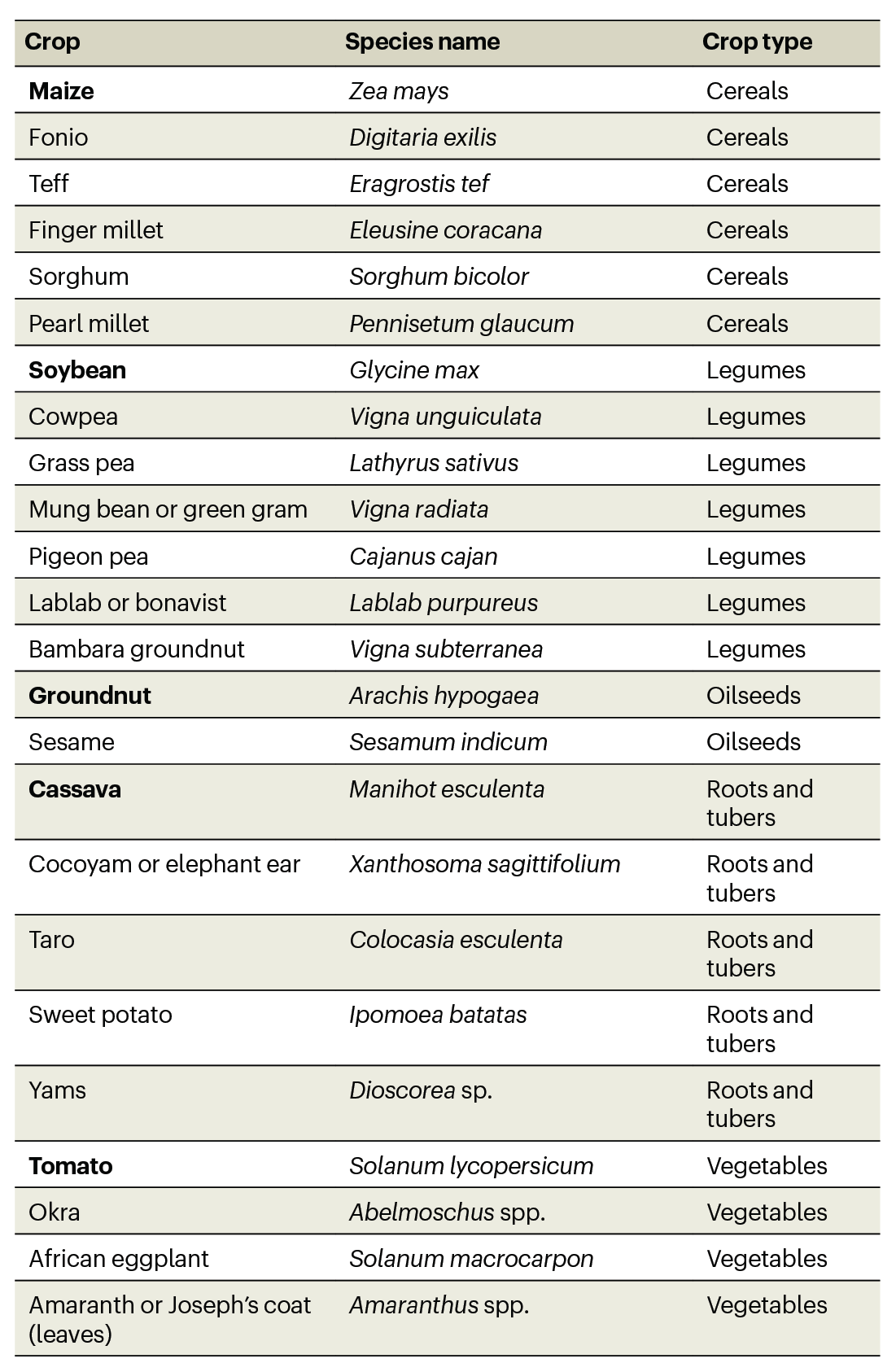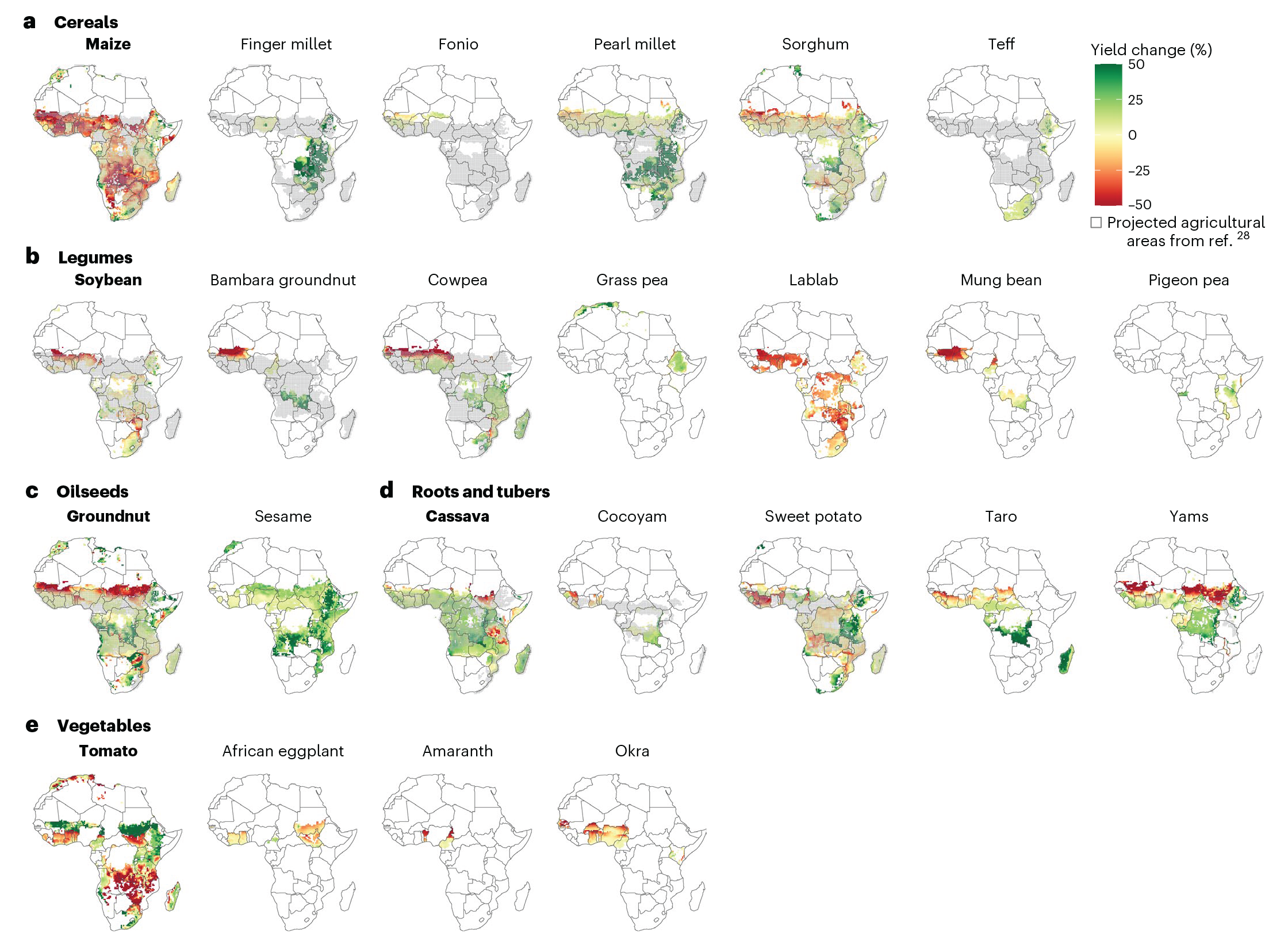Guarin & Yang et al. simulate several opportunity crops in Africa for first time
By Natalie Kozlowski
27 November, 2025
The Vision for Adapted Crops and Soils (VACS) was launched by the U.S. Department of State in February 2023 in partnership with the African Union (AU), the Agricultural Model Intercomparison and Improvement Project (AgMIP), Food and Agriculture Organization of the United Nations (FAO), and African Orphan Crops Consortium (AOCC). Phase 1 of VACS resulted in a selected list of nutritious and regionally relevant crops, categorized into five groups: cereals, legumes, oilseeds, root and tubers, and vegetables; these crops are collectively referred to as “opportunity crops.” In the past, opportunity crops have not been prioritized in research, policy, and investment; rather, more widely cultivated staple crops, such as maize, rice, and wheat, have benefited most. Opportunity crops, to varying degrees, are high in nutritional content, resilient to climate change, and can grow in conditions that are unfavorable to staple crops, making them a viable option to help sustain local communities and contribute to Africa’s food security in the coming years as climate extremes continue to increase.
AgMIP played a key role in VACS Phase 2, which completed an assessment of climate change impacts on the selected opportunity crops. In a new Nature Plants paper, Guarin & Yang et al. provide mid-century yield change projections across Africa for 24 crops, including 19 opportunity crops, several of which were simulated for the first time. The study uses the SIMPLE process-based crop model under low and high emissions scenarios (SSP1-2.6 and SSP3-7.0, respectively) and four CMIP6 GCMs. SIMPLE was used in this study, as it has lower input data requirements and provides the ability for an exploratory approach in creating new crop simulations, especially for under-researched opportunity crops where data is lacking. The crop model climate input and setup are based upon the AgMIP Global Gridded Crop Model Intercomparison (GGCMI) Phase 3 protocol (Jägermeyr et al., 2021).

Table 1. List of 24 crops examined in study. Crop names in bold indicate staple crops representing each crop group.
Guarin & Yang et al. find that 10 of 19 opportunity crops increase in yield under both low and high emission scenarios, ranging from 2-16% by 2050 when being weighted by present-day cultivation area (Figure 1). Notably, four of five staple crops are projected to decrease in yield in both scenarios; only cassava sees an increase in yield (up to 18%). The authors note that teff and grass pea demonstrate the largest yield gains (16%), and roots and tubers are overall the most resilient crop type, with four out of five crops showing average yield increases.

Figure 1. Simulated mid-century crop yield changes for Africa under a projected high emissions scenario (SSP3-7.0).
Maize is projected to decrease in productivity in most cultivated areas of Africa, providing a chance for opportunity crops that are more climate-resilient, such as pearl millet, fonio, finger millet, teff, and sorghum, to fill this gap left behind (Figure 2). Similar to maize, other cash crops spread across all five categories are projected to decrease in productivity and could be replaced by more climate-resilient opportunity crops.
Regional yield change patterns are highly heterogeneous, which emphasizes the need to consider local contexts and environmental conditions. A few opportunity crops, such as fonio, teff, and pigeon pea, are expected to see yield gains, but are only grown in select regions, meaning they could benefit from an expanded area of cultivation. Climate suitability projections from Chemura et al. show that an expansion of cultivation area for many crops is a very real possibility, as shown in the grey hatched area in Figure 1.

Figure 2. Best and worst performing crop per grid cell under the high emissions scenario (SSP3-7.0).
Through this study, Guarin & Yang et al. provide a comprehensive catalogue of novel African opportunity crop simulations that can aid in identifying the crops with the potential to provide the largest benefits due to agroclimatic resiliency and geographic and cultural significance. The authors call for a paradigm shift; rather than focusing on a few staple crops, a more diversified and inclusive approach that harnesses the benefits of opportunity crops is needed. Guarin & Yang et al. also call for further research and investment, and express the need to gather local knowledge to account for the diverse needs and perspectives of communities most vulnerable to projected climate change impacts.
Guarin & Yang et al. is now available to read in Nature Plants here.
Additional Resources:
Read Guarin & Yang et al. in Nature Plants: https://www.nature.com/articles/s41477-025-02157-9
Author Contact Info:
Dr. Jose Guarin (jose.r.guarin@nasa.gov)
Dr. Meijian Yang (my2824@columbia.edu)
